Recent Articles
Popular Makes
Body Types
10 Things New Parents Should Consider Before Buying a New Car
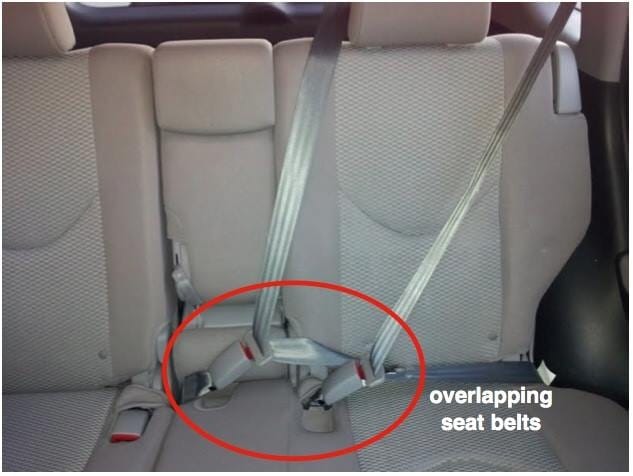
Overlappingseatbeltsdontdobadthingstoconsiderwhenshopping
Car shopping can be overwhelming for anybody: so many vehicles to choose from, so many options within each model, deciding whether to go with new or used, buy or lease, and more.
Once you have children, there are even more things you need to consider before making your decision. After all, this is a major purchase: It needs to keep your family safe and comfortable for years to come, and be convenient and practical for your needs.
Read on to learn what you should look for when selecting your family’s next ride. Putting in a little extra research beforehand could save you a great deal of money and frustration later on!
Safety ratings
Everyone wants a safe vehicle, but when you have a family, safety seems even more important. I recommend checking out the IIHS ratings before settling on a “short list” of cars to look at. No matter how great a vehicle seems otherwise, if it hasn't fared well in crash tests, you’ll probably want to skip it.
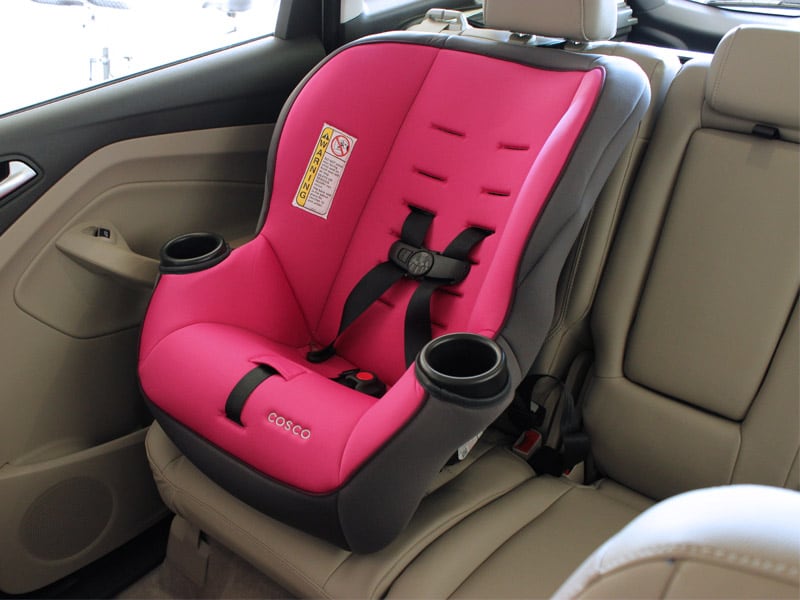
Space
You’ve probably already thought about how many seating positions you want your new car to have. Remember, though, just because it’s “an 8-seater” doesn’t mean you’ll actually be able to FIT eight humans inside, at least not safely.
In addition to width, consider the available front-to-back space. How far back do the front seats need to be for those up front to ride safely and comfortably? What about legroom for the backseat riders?
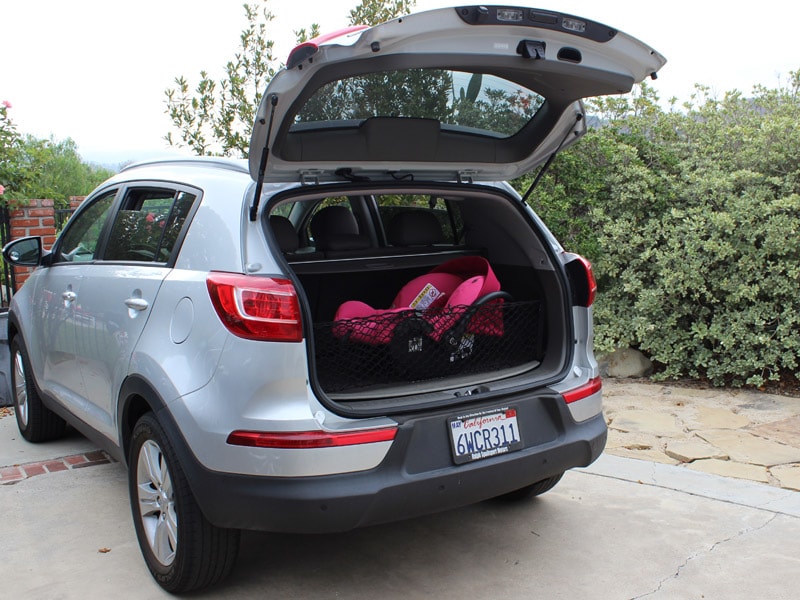
Overlapping seat belts
A very frustrating trend, especially in recent years, is that more vehicles are being designed with overlapping seat belts. The Manufacturers’ Alliance for Child Passenger Safety (MACPS), an organization of vehicle and child seat manufacturers, states that one cannot safely install two car seats next to each other if doing so causes the seat belts or LATCH straps to cross over each other.
For example, the Toyota RAV4 (pictured above) has had a huge belt overlap since 2006. With all belts buckled, you can clearly see the problem: If you were to use both at the same time, one end of the center belt would wind up under the car seat installed behind the driver. Severe overlap like this isn’t safe or comfortable for adults either. Who wants the end of that buckle poking into their butt? No thanks.
Overlap is most common in Toyota and Lexus vehicles, but it’s increasingly also found in Kias, Hyundais, and a few Hondas and Fords. Fortunately, it’s easy to test for this. Just buckle all three belts and see if they cross. If they do, and you think you may need to have three people and/or car seats across that seat at any time, cross that vehicle off the list and move on.
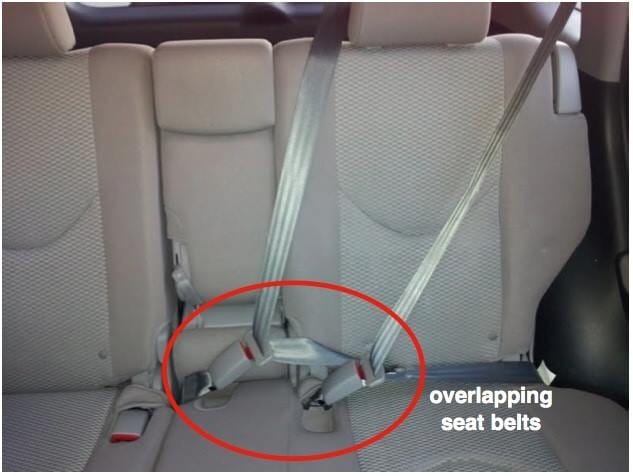
LATCH anchors
When you install a car seat, you’ll likely want to make use of the LATCH system. The lower anchors are intended for convenience, and a car seat can be installed just as safely with the vehicle seat belt (don’t use both simultaneously on one seat). The top tether anchors, on the other hand, are extremely important for any forward-facing harnessed seat. All vehicles sold in the U.S. since model year 2001 are required to have at least three tether anchors, although they may be hard to find in some cars.
You might be thinking, “I only have/plan to have three kids, so I don’t need more than three tether anchors.” The problem is, they may be in locations that severely limit your options for arranging the seats. For example, there may be no anchors in the third row, or only one. An untethered forward-facing seat is dangerous enough that it’s illegal in Canada (in the U.S. it isn’t technically illegal, but still just as risky), so don’t put yourself in a position where you may have to do that.
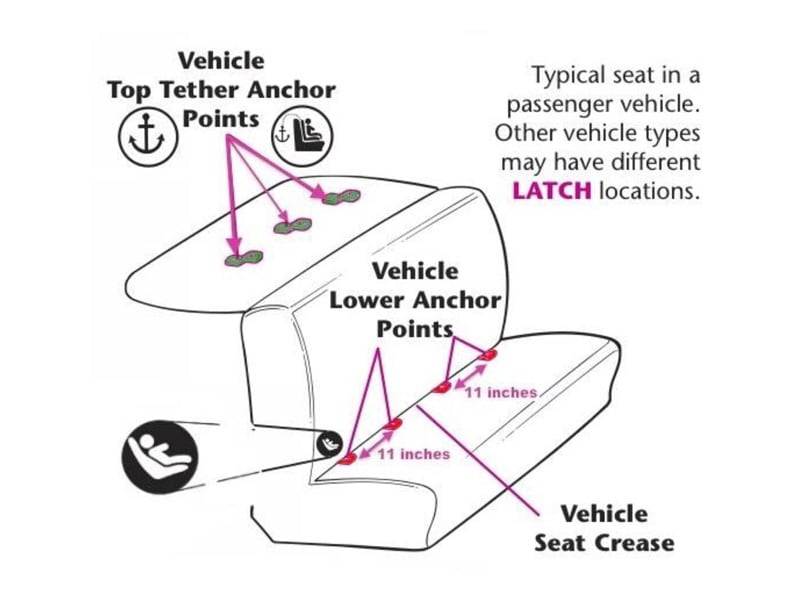
Headrests
Vehicle headrests are for more than just comfort; in fact, their official, technical name is “head restraints.” No one, including adults and boostered children, should ride without head support at least to the tops of their ears. Doing so could be a recipe for severe, debilitating whiplash and other neck injuries in a crash. Unfortunately, there’s no requirement that rear seating positions have headrests, and many don’t, especially in the center and in the third row. That can be very limiting when it comes to who can safely sit where.
There is a relatively recent trend toward headrests that angle forward. These do improve safety for adults, but they can make it difficult or impossible to install a forward-facing seat or high-back booster. Take into account whether the headrests may interfere with installing a seat, as well as whether they can be removed and/or adjusted to accommodate child seats.
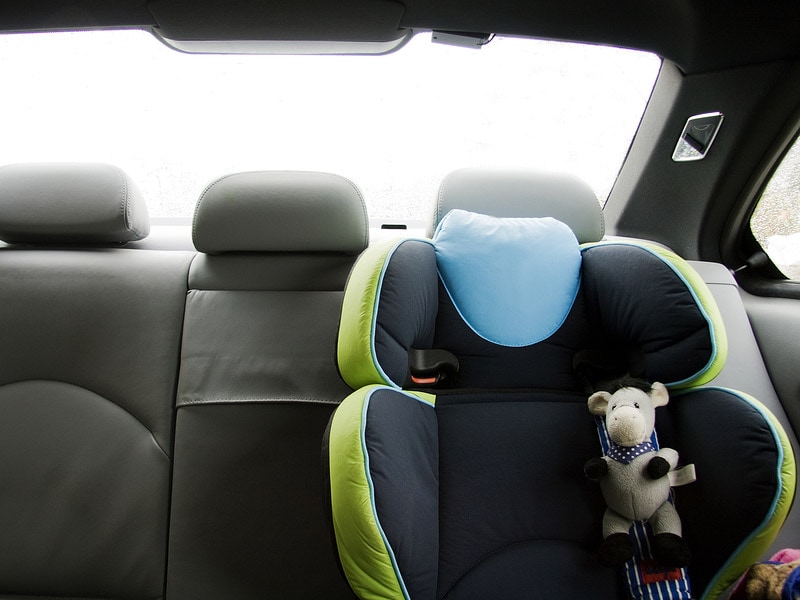
Seat belts
Even if there are enough seat belts and they don’t overlap, you still need to check out whether they’re safe and appropriate for those riding in back. Since 2007, cars sold in the United States have been required to have lap/shoulder belts in all seating positions. A lap-only belt is not safe for an adult or a child in a booster; they should be used only to install harnessed seats. If you’re shopping for an older used vehicle, be on the lookout for lap-only belts.
Also look at the shoulder belt fit for adults and booster riders. It should fully contact the collar bone, not “hover” in front of the shoulder. Certain vehicles, such as the Mazda5, Dodge Grand Caravan, and Chrysler Town and Country, have very poor shoulder belt fit in the third row, to the point that an adult or backless booster rider simply cannot safely ride there.
A few vehicles, notably many Ford and Lincoln models, now offer optional “inflatable seat belts,” where an airbag is built into the seat belt. These first became available in model year 2011. While an innovative safety feature for adults, most car seats cannot be installed with them—only two brands currently permit doing so. If you’ll be using car seats, it’s probably best to forgo this option.
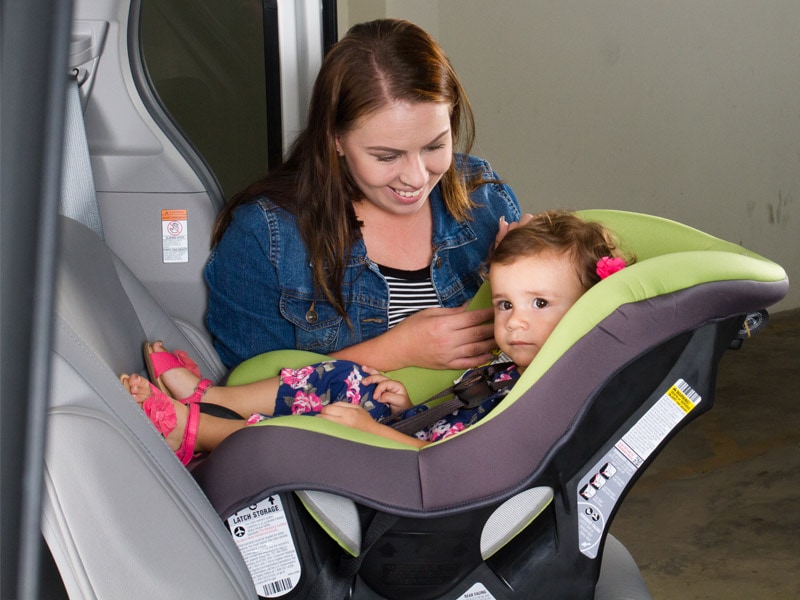
Photo by Chris Chavira
Restrictions in the vehicle manual
Read through the car’s owner’s manual, paying special attention to the section on child restraints. Some vehicles recommend against, or even forbid, installing car seats in certain seating positions. For example, the BMW X5 manual states that you may never install a child restraint in the third row at all. Obviously, this could very much limit where your children could sit in a given vehicle.
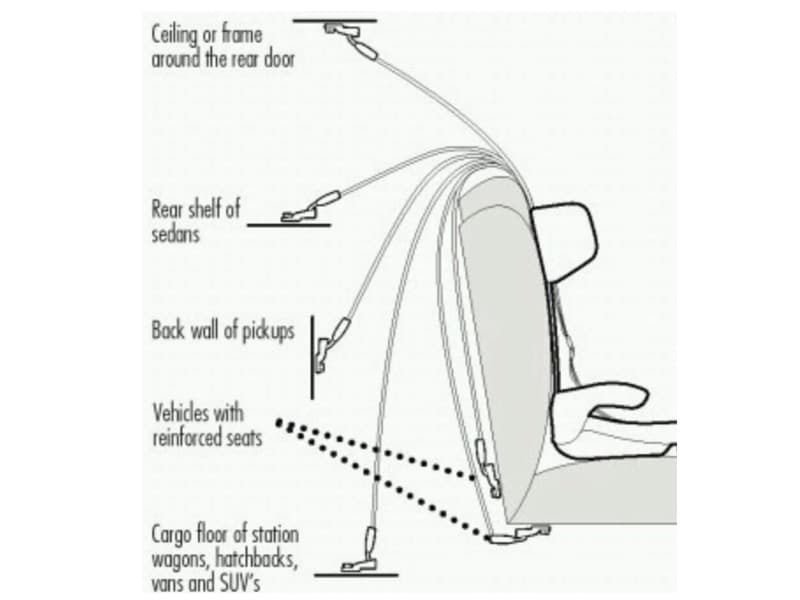
Think ahead
Remember, you’ll probably have this vehicle for at least a few years, so it makes sense to consider not just what your family’s needs are currently, but what they might be for the future as well. Do you plan to have more children? Your current children are going to get bigger—will this vehicle still be safe and practical once your kids are on to the next stage (be it forward-facing, a booster, or seatbelt only)? Will you need to cart around extra kids as your children get older (carpools, play dates, etc.)?
The point is, even if the vehicle works for you at this moment, it may not be financially or logistically reasonable to trade it in a year or two from now when you find out a new baby is on the way. Be sure to think long-term.

Most important: try before you buy!
Some people feel awkward about asking the salesperson to let them try installing their car seats in a vehicle they’re looking at. Actually, if they want the sale, they’ll gladly accommodate your request.
In the spirit of thinking long-term, try putting the seats in forward-facing, rear-facing, as a booster, and any other way you think your children might use them while you own the car. Does everything fit? Can it be installed securely? Are the contours of the seats and the style and placement of the seatbelts car-seat-friendly? Will you be able to separate two of your kids who are always trying to beat each other up and still have everyone ride safely?
Try lifting the infant seat into the place you would put it, loading the toddler into the rear-facing seat, and crawling into the third row to buckle a kiddo in. Are you willing to load and unload the kids in this way, multiple times a day, every day?
Does all this sound time consuming? Yes, it can be. But trust me, in the long run, this is time well invested—and you won’t have to do it again for years!
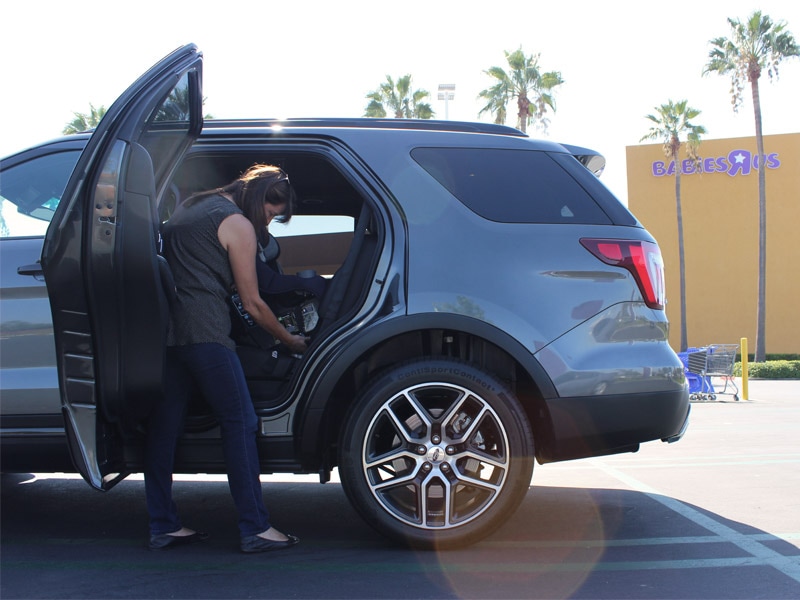
Happy Shopping!
Vehicle shopping doesn’t have to be a drag—sometimes it even can be fun! But it’s also something that needs to be taken seriously especially when you have a growing family. Here’s what it comes down to: Be honest with yourself. No matter how much you love the look and feel of the vehicle, you don’t want to be kicking yourself in a few months when the novelty wears off and you’re stuck with a car that, for whatever reason, just does NOT work for your family and lifestyle.
For advice on car seat shopping, as well as general child passenger safety information, check out the links below:
9 Things to Know Before Going Car Seat Shopping http://www.autobytel.com/car-ownership/family/9-things-to-know-before-going-car-seat-shopping-130036/
How to Choose a Car Seat http://www.autobytel.com/car-ownership/safety/how-to-choose-a-car-seat-125294/
Car Seats for the Littles http://www.csftl.org
The Car Seat Lady http://www.thecarseatlady.com
